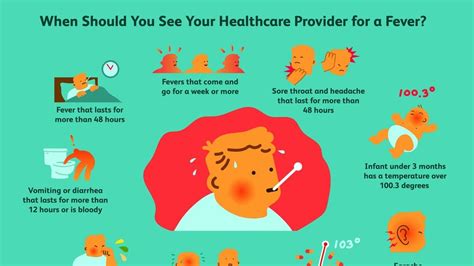Intro
Learn if 101 is a high fever, understanding fever thresholds, and recognizing symptoms of high fever in adults and children, including temperature readings and health implications.
A fever is a common symptom that can occur in anyone, regardless of age or health status. It is usually a sign that the body is fighting off an infection or illness. When it comes to determining whether a fever is high or not, the temperature reading is a crucial factor. In this case, we are discussing a fever of 101 degrees. But is 101 a high fever? To answer this question, let's delve into the world of fevers and explore what constitutes a high fever, its causes, symptoms, and treatment options.
Fever is a natural response of the body's immune system to infection or inflammation. When the body detects the presence of foreign substances, such as bacteria or viruses, it releases chemicals that trigger a rise in body temperature. This increased temperature helps to create an environment that is less conducive to the growth and multiplication of the invading organisms. In most cases, a fever is not a cause for concern and can be treated with over-the-counter medications and home remedies. However, in some instances, a high fever can be a sign of a more serious underlying condition that requires medical attention.
The severity of a fever is typically determined by the body temperature reading. A normal body temperature ranges from 97.7 to 99.5 degrees Fahrenheit. A low-grade fever is usually defined as a temperature between 100.4 and 102 degrees Fahrenheit. A high fever, on the other hand, is typically considered to be a temperature above 103 degrees Fahrenheit. Based on this definition, a fever of 101 degrees would be considered a low-grade fever. However, it's essential to note that the severity of a fever can also depend on the individual's overall health status, age, and the underlying cause of the fever.
Understanding Fevers

To better understand fevers, it's crucial to recognize the different types of fevers and their characteristics. There are several types of fevers, including continuous fevers, remittent fevers, intermittent fevers, and relapsing fevers. Continuous fevers are characterized by a persistent elevation in body temperature, usually above 103 degrees Fahrenheit. Remittent fevers, on the other hand, are marked by a wide range of temperature fluctuations, but the temperature never returns to normal. Intermittent fevers are defined by periods of normal temperature interspersed with periods of elevated temperature. Relapsing fevers are characterized by periods of fever that recur over time, often with periods of normal temperature in between.
Causes of Fevers
Fevers can be caused by a variety of factors, including infections, inflammatory conditions, and environmental factors. Infections are the most common cause of fevers, and they can be caused by bacteria, viruses, fungi, or parasites. Inflammatory conditions, such as arthritis, can also cause fevers, as can environmental factors like heat stroke or heat exhaustion. In some cases, fevers can be caused by underlying medical conditions, such as cancer or autoimmune disorders.Treatment Options

When it comes to treating fevers, the approach often depends on the underlying cause and the severity of the fever. In most cases, low-grade fevers can be treated with over-the-counter medications like acetaminophen or ibuprofen. However, it's essential to follow the recommended dosage instructions and consult with a healthcare professional before giving medication to children or individuals with underlying medical conditions. In addition to medication, there are several home remedies that can help to reduce fever, such as staying hydrated, resting, and using cool compresses.
Home Remedies
Home remedies can be an effective way to reduce fever and alleviate symptoms. Some popular home remedies for fever include drinking plenty of fluids, taking cool baths, and using cool compresses. It's also essential to get plenty of rest and avoid strenuous activities. In some cases, herbal remedies like willow bark or elderberry may be effective in reducing fever, but it's crucial to consult with a healthcare professional before using any herbal remedies.When to Seek Medical Attention

While most fevers can be treated at home, there are instances where medical attention is necessary. If you or a loved one experiences a fever above 103 degrees Fahrenheit, it's essential to seek medical attention. Additionally, if the fever is accompanied by other symptoms like headache, stiff neck, or difficulty breathing, medical attention is necessary. In infants and young children, any fever above 100.4 degrees Fahrenheit requires medical attention, as it can be a sign of a serious underlying infection.
Risk Factors
Certain individuals are at a higher risk of developing complications from fevers, including older adults, young children, and people with weakened immune systems. Older adults may be more susceptible to dehydration and other complications from fever, while young children may be at risk of developing serious infections like meningitis or sepsis. People with weakened immune systems, such as those with HIV/AIDS or undergoing chemotherapy, may be more prone to developing opportunistic infections that can cause fever.Prevention

Preventing fevers is often a matter of practicing good hygiene and taking steps to avoid infections. Washing your hands regularly, avoiding close contact with people who are sick, and getting vaccinated against common illnesses can help to reduce the risk of developing a fever. Additionally, maintaining a healthy lifestyle, including a balanced diet and regular exercise, can help to boost the immune system and reduce the risk of infection.
Vaccinations
Vaccinations can play a crucial role in preventing fevers caused by infectious diseases. Vaccines work by introducing a small, harmless piece of a virus or bacteria to the body, which triggers an immune response and helps to build immunity. By getting vaccinated against common illnesses like influenza, pneumonia, and meningitis, individuals can reduce their risk of developing a fever and other complications.Conclusion and Next Steps

In conclusion, a fever of 101 degrees is considered a low-grade fever. While it's essential to monitor the fever and seek medical attention if necessary, most low-grade fevers can be treated at home with over-the-counter medications and home remedies. By understanding the causes and symptoms of fevers, individuals can take steps to prevent and treat fevers, reducing the risk of complications and promoting overall health and well-being.
Final Thoughts
As we've explored the world of fevers, it's clear that fevers are a common and natural response to infection or inflammation. By recognizing the signs and symptoms of fevers, understanding the different types of fevers, and taking steps to prevent and treat fevers, individuals can promote overall health and well-being. Whether you're experiencing a low-grade fever or a high fever, it's essential to seek medical attention if you're unsure about the cause or severity of the fever.What is a normal body temperature?
+A normal body temperature ranges from 97.7 to 99.5 degrees Fahrenheit.
What is a high fever?
+A high fever is typically considered to be a temperature above 103 degrees Fahrenheit.
When should I seek medical attention for a fever?
+You should seek medical attention if you experience a fever above 103 degrees Fahrenheit, or if the fever is accompanied by other symptoms like headache, stiff neck, or difficulty breathing.
We hope this article has provided you with a comprehensive understanding of fevers, including what constitutes a high fever, the causes and symptoms of fevers, and treatment options. If you have any further questions or concerns, please don't hesitate to comment below. Share this article with your friends and family to help promote awareness and understanding of fevers. By working together, we can promote overall health and well-being, reducing the risk of complications and promoting a healthier, happier life.
